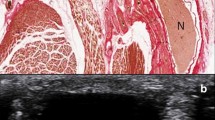Summary
-
1.
Heart rates in intact spiders at rest were 35/min and after 3 min exercise 77/min. Recovery to the initial rate required 1/2 hr. In cannulated animals heart rates ranged from 44/min at rest to 116/min after a struggle. Heart rate was relatively independent of internal pressure.
-
2.
Variations in heart rate and amplitude occurred spontaneously and in response to various stimuli (Fig. 6).
-
3.
Systole averages 68% of total beat duration through a range of heart rates from 21–116 min (Fig. 4).
-
4.
Intraventricular pressures 10 min after cannulating averaged 22/13 mm Hg, but fell to 12/8 mm Hg after 10 min in the dark (Fig. 5). A maximum pressure of 102 mm Hg was measured in one animal. The pressure recorded in the heart is generated in part by the heart and in part reflects abdominal tension.
-
5.
Resting pressures in any 2 legs were always identical and were above that in the prosoma.
-
6.
Resting pressures in the prosoma and lateral sacs are intermediate to heart systolic and diastolic pressures which in a relaxed animal were 12/8 mm Hg (Fig. 11).
-
7.
At rest a gradient of only a few mm Hg propels the blood through the lung books from the lateral sacs to the pulmonary veins; a gradient of 1–2 mm Hg exists between the pulmonary vein and the heart in diastole.
-
8.
General abdominal pressure is above pulmonary vein pressure suggesting a need for a mechanism to maintain patency of these vessels.
-
9.
During a struggle a maximum pressure of 480 mm Hg was measured in the prosoma.
-
10.
High pressures were recorded in the lateral sacs which communicate freely with the prosoma but were not transmitted to the heart.
-
11.
Pressures of 40–60 mm Hg were measured in the prosoma and legs during wialking (Fig. 18) and delivery of blood through the pedal arteries probably continues at this level.
-
12.
Withdrawal of blood causes an immediate decrease in heart pressure. Within min some recovery occurs presumably because of muscular adjustments (Fig. 19).
Similar content being viewed by others
References
Bristowe, W. S., Millot, J.: The Liphistiid spiders. Proc. zool. Soc., Lond.103, 1015–1057 (1933)
Brown, R. B.: The musculature ofAgelena naevia. J. Morph.64, 115–154 (1939)
Bursey, C. R., Sherman, R. G.: Spider cardiac physiology. I. Structure and function of the cardiac ganglion. Comp. gen. Pharmac.1, 171–184 (1970)
Cloudesley-Thompson, J. L.: Studies in diurnal rhythms. J. Linn. Soc. (Zool.)43, 134–152 (1957)
Ellis, C. H.: The mechanism of extension in the legs of spiders. Biol. Bull. (Wood's Hole)86, 41–50 (1944)
Fyhn, H. J., Petersen, J. A., Johansen, K.: Heart activity and high pressure circulation in Cirripedia. Science180, 513–515 (1973)
Larimer, J. L., Tindel, J. R.: Sensory modifications of heart-rate in the crayfish. Anim. Behav.14, 239–245 (1966)
Manton, S. M.: Hydrostatic pressure and leg extension in arthropods. Ann. Mag. Nat. Hist. Ser. XIII1, 161–182 (1958)
Millot, J.: Ordre des Aranéides. In: Traité de Zoologie VI, edited by P. P. Grassé-Paris: Masson & Cie 1949
Parry, D. A.: Spider hydraulics. Endeavour19, 156–162 (1960).
Parry, D. A., Brown, R. H. J.: The hydraulic mechanism of the spider leg. J. exp. Biol.36, 423–433 (1959a)
Parry, D. A., Brown, R. H. J.: The jumping mechanism of salticid spiders. J. exp. Biol.36, 654–664 (1959b)
Petrunkevitch, A.: Contribution to our knowledge of the anatomy and relationships of spiders. Ann. entomol. Soc. Amer.2, 11–21 (1909)
Petrunkevitch, A.: The circulatory system and segmentation in Arachnida. J. Morph.36, 157–185 (1922)
Rijlant, P.: L'automatisme cardiaque chez l'Araignée: Mygale, Espéire, Tarentule, etc. C. R. Acad. Sci. (Paris)113, 917–920 (1933)
Savory, T. H.: The biology of spiders. London: Sidgwick and Jackson, Ltd. 1928
Sherman, R. G., Pax, R. A.: The heartbeat of the spider,Geolycosa missouriensis. Comp. Biochem. Physiol.26, 529–536 (1968)
Stewart, D. M., Martin, A. W.: Blood and fluid balance of the common tarantula,Dugesiella hentzi. Z. vergl. Physiol.70, 223–246 (1970)
Wilson, R. S.: The structure of the dragline control valves in the garden spider. Quart. J. micr. Sci.103, 549–565 (1962a)
Wilson, R. S.: The control of dragline spinning in the garden spider. Quart. J. micr. Sci.104, 557–571 (1962b)
Wilson, R. S.: The pedicel of the spiderHeteropoda venatoria. J. Zool.147, 38–45 (1965)
Wilson, R. S.: The heartbeat of the spider,Heteropoda venatoria. J. Insect Physiol.13, 1309–1326 (1967)
Wilson, R. S.: Control of drag-line spinning in certain spiders. Amer. Zool.9, 103–111 (1969)
Wilson, R. S.: Some comments on the hydrostatic system of spiders (Chelicerata, Araneae). Z. Morph. Tiere68, 308–322 (1970)
Wilson, R. S., Bullock, J.: The hydraulic interaction between prosoma and opisthosoma inAmamobius ferox (Chelicerata, Araneae). Z. Morph. Tiere74, 221–230 (1973)
Author information
Authors and Affiliations
Additional information
Supported by National Science Foundation Grant Number GB 17539.
Rights and permissions
About this article
Cite this article
Stewart, D.M., Martin, A.W. Blood pressure in the tarantula,Dugesiella hentzi . J. Comp. Physiol. 88, 141–172 (1974). https://doi.org/10.1007/BF00695405
Received:
Issue Date:
DOI: https://doi.org/10.1007/BF00695405




